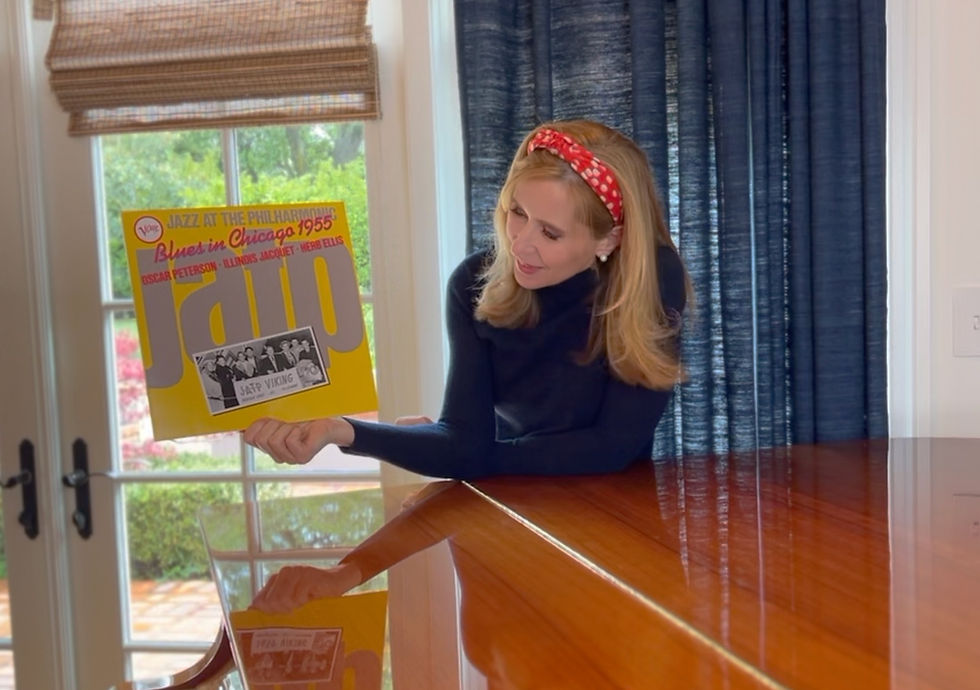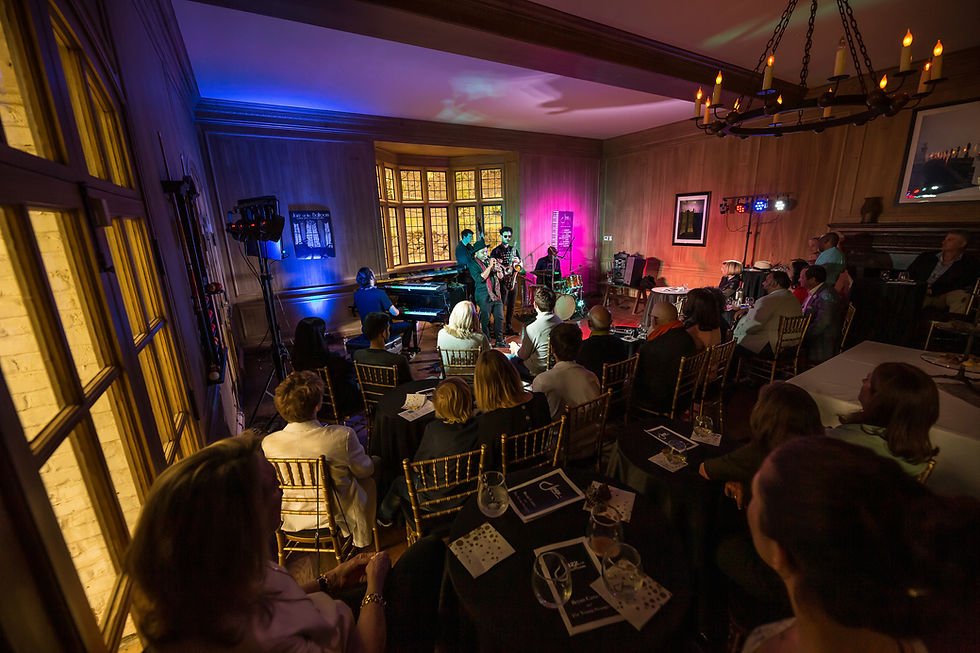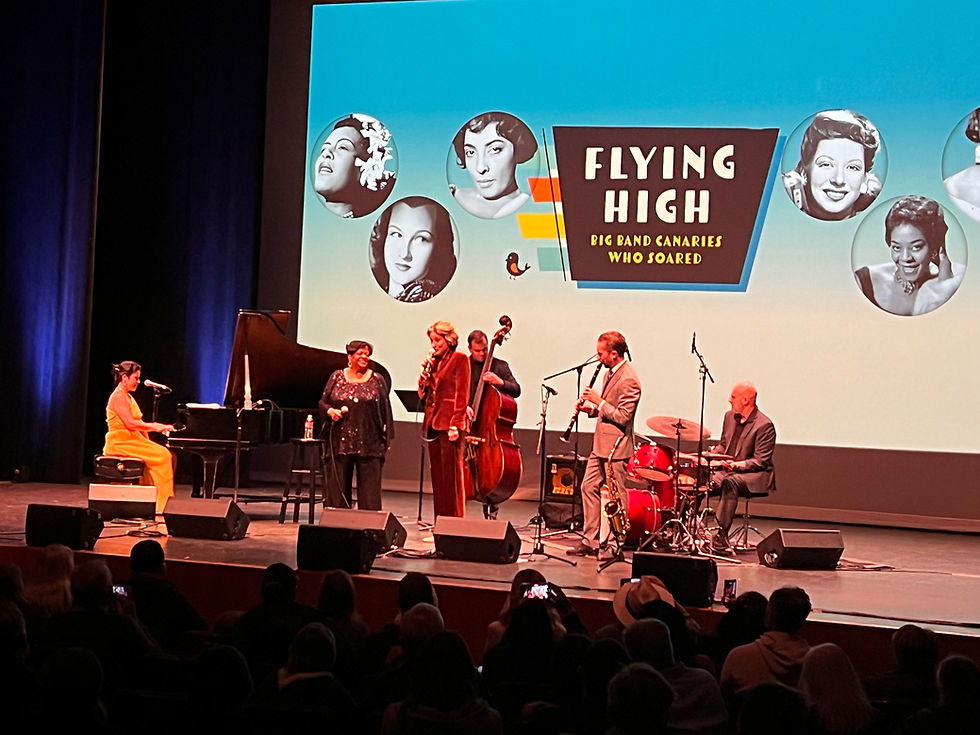Carrying the Torch of Jazz at the Philharmonic
- Suzanne Waldowski

- May 7
- 4 min read
Past meets present: a Modern Take on a Music Mission
What does it take for a single-minded jazz fan to become a promoter and producer, start their own record label, and decide to work 24/7 to share the music they love with the rest of the world?
It sounds like it should be a riddle, but the answer is easy: a song.
For jazz visionary, Norman Granz, it was hearing Coleman Hawkins’ recording of “Body And Soul” shortly after it was released in 1940. Years later, for Suzanne Waldowski, it was the Stan Getz recording of “These Foolish Things.”
What happened to Granz after discovering Coleman Hawkins reads like a story—
Once upon a time, in a world where jazz musicians roamed free and saxophones crooned in smoky venues, a UCLA-drop out working at the Stock Exchange, Norman Granz, decided that jazz deserved a stage as impressive as its sound.
It was the 1940s when Granz brought to life Jazz at the Philharmonic (JATP)—providing a home for legends like Ella Fitzgerald, Oscar Peterson, Nat King Cole, and so many other jazz greats. Fast forward several decades, and a new home for jazz was taking place: Jazz at the Ballroom (JATB), the sophisticated, martini-clinking successor to Granz’s grand vision.

So, how did we go from raucous jam sessions in smoky clubs to concert halls with JATP to a curated salon series in a ballroom? Let’s waltz (or swing) through the rest of the story.
Norman Granz leads the way
Imagine a world where jazz was often shoved into cramped clubs, restricted by racial barriers, and dismissed as background noise. Enter Norman Granz: part impresario, part disruptor, full-time jazz evangelist. He corralled some of the greatest musicians of the era, slapped a "Philharmonic" on the marquee to confuse the classical crowd, and turned jazz into a theatrical spectacle.
His concerts were no mere gigs; they were battlegrounds where musical titans dueled with improvisation, and audiences were left slack-jawed at the sheer audacity of it all. And Granz? He was there in the trenches, making sure musicians were paid fairly, treated with respect, and—above all—given the stage they deserved.
Enter Jazz at the Ballroom: A Nostalgic Love Letter
Fast forward to 2016, when Suzanne Waldowski found herself in Bing Crosby’s former Northern California estate. Now, one doesn’t simply move into such a place without feeling the weight of its musical ghosts. Inspired by the lore of old Hollywood and the intimate magic of salon concerts, she had a revelation: jazz needed its class back.
It was then that Suzanne brought Jazz at the Ballroom (JATB) to life—a love letter to the golden age of jazz, where music, ambiance, and finely mixed drinks coexisted in perfect harmony.
If JATP was a wild jazz safari, JATB is a glamorous jazz speakeasy. Instead of raucous jam sessions in cavernous halls, JATB brought audiences into an elegant setting where the only thing stronger than the cocktails was the musical chemistry. But make no mistake, even today, the spirit of Granz is alive and well.

JATP and JATB: A Tale of Two Jazz Eras
From the start, JATB followed in JATP’s footsteps but added its own flair. Where Granz took jazz out of dingy clubs and into grand concert halls, JATB restored the tradition of intimate performances, where the audience is close enough to hand a musician a glass of water.
Granz was a master at gathering the best musicians and setting them loose in jam sessions that could turn any evening into a musical legend.
JATB, too, has assembled an all-star cast: Freddy Cole, the Clayton-Hamilton Orchestra, John Pizzarelli, Samara Joy, Pasquale Grasso, Stella Cole, James Morrison, Ken Peplowski, Terell Stafford, Jane Monheit—each one carrying the torch of jazz brilliance, just as Granz’s musicians once did.
And just like Granz, who recorded his legendary concerts for posterity (and for the joy of jazz lovers everywhere), JATB has taken to producing its own albums, including Flying High and Accentuate the Positive, proving that while the ballrooms may be fancier, the mission remains the same: to keep jazz alive and swinging.

What Granz Taught the Ballroom
Granz wasn’t just a jazz promoter; he was a jazz mogul. When everyone else in the record business saw LPs as a fad, Granz saw opportunity, using them to capture the magic of JATP’s marathon jam sessions. He was a pioneer in ensuring that jazz wasn’t just a fleeting moment, but a legacy.
JATB follows suit, understanding that jazz, in all its smoky allure, needs a home beyond the ballroom. Since moving out of the ballroom in 2021, JATB now presents music across the country. They continue to record (under their own label), with the same goal of Granz: to capture the music that will transport future generations.
Why Jazz at the Ballroom Feels Like a Dream You Don’t Want to Wake Up From
Already, audience members speak nostalgically and affectionately about their times in the ballroom. Attending a performance there wasn’t just going to a concert; it was stepping into a time machine. One audience member summed it up best: “It felt like it was time to kiss or dance with someone.”
And isn’t that what jazz is all about? The thrill, the romance, the ineffable magic that makes your heart beat. While Granz’s JATP brought jazz into the mainstream, JATB ensures it never loses its soul.
Jazz at the Philharmonic revolutionized jazz presentation; Jazz at the Ballroom keeps that revolution dressed to the nines, holding a glass of something strong, and whistling “Ain’t we got fun?” and other foolish things.
Be sure to check out what’s coming up next at the Jazz at the Ballroom calendar.


Comments